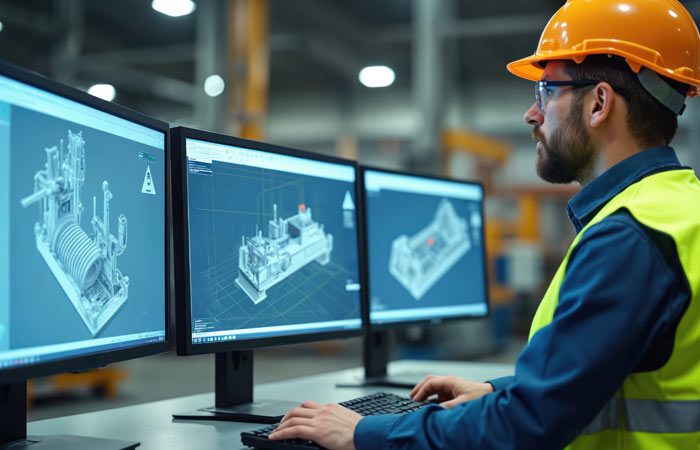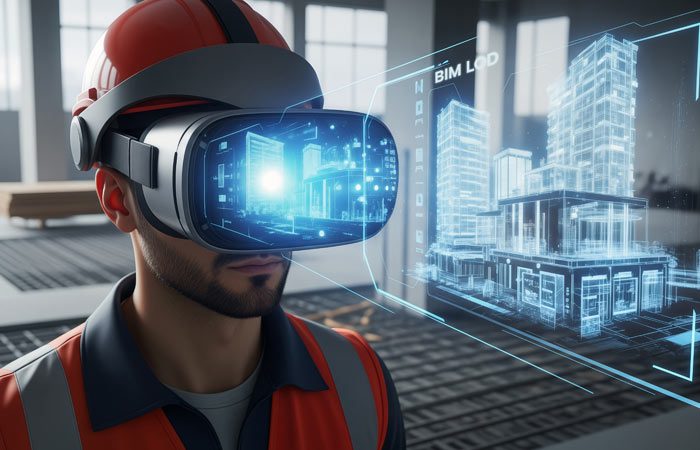
Integrating 3D Laser Scanning with Piping Engineering for Brownfield Projects
Brownfield projects are some of the most complex challenges in industrial engineering. Unlike greenfield projects that start with a clean slate, brownfield initiatives involve working with existing facilities—aging plants, legacy piping systems, and crowded spaces that leave little room for error. When modifications, retrofits, or expansions are required, traditional surveying methods often fall short, leading to costly rework, safety risks, and schedule overruns.
This is where the integration of 3D laser scanning in piping engineering is transforming the way brownfield projects are executed. By capturing precise as-built data and creating intelligent 3D models, laser scanning brings accuracy, speed, and efficiency to brownfield piping design services across industries such as oil & gas, chemical processing, and power generation.
Why Brownfield Projects Demand Precision
Piping engineering for brownfield projects comes with unique constraints. Facilities are often decades old, with incomplete or outdated documentation. Over time, undocumented modifications, corrosion, and structural shifts can further complicate the layout. Engineers tasked with upgrades—be it piping modification, equipment replacement, or full-scale plant revamps—need an accurate picture of what already exists before they can design the new.
Traditional surveying approaches, reliant on manual measurements, are slow, labor-intensive, and prone to error. Even small inaccuracies can result in misaligned pipe spools, clashes during installation, and additional costs. That’s why 3D laser scanning for brownfield projects is becoming the go-to approach, delivering reliable data that serves as the foundation for modern piping design.
How 3D Laser Scanning Works
3D laser scanning solutions for power plant revamps, oil & gas refits, or chemical plant upgrades rely on LiDAR-based technology. Scanners emit laser beams that measure millions of points on surfaces within their line of sight, creating a dense “point cloud.” This point cloud acts as a digital replica of the plant environment, capturing every angle, pipe, support, and obstruction with millimeter-level accuracy.
Once the scan is complete, the point cloud data can be converted into intelligent piping system 3D modeling. Engineers use this model for clash detection, layout optimization, and integration of new components—whether it’s rerouting a pipeline, adding new heat exchangers, or expanding process units.
Benefits of 3D Laser Scanning in Brownfield Piping Projects
The advantages of using 3D scanning in plant engineering go far beyond accuracy:
- As-Built Documentation: Laser scanning for as-built documentation ensures engineers have a true record of existing site conditions. This reduces dependency on outdated drawings and minimizes surprises during execution.
- Piping Layout Optimization: With piping layout optimization using 3D scanning, designers can test multiple routing options virtually and select the most efficient path, reducing material use and improving maintainability.
- Reduced Rework: By detecting clashes between existing and proposed piping systems early, 3D laser scanning for piping modification and expansion significantly cuts down on rework during installation.
- Safety Improvements: Engineers can survey hard-to-reach areas without scaffolding or shutdowns, improving worker safety during the data capture phase.
- Cost and Time Savings: Cost savings with 3D scanning in plant piping projects are realized through fewer errors, faster design cycles, and reduced downtime during construction. Compared to traditional piping survey methods, laser scanning offers higher returns on investment.
3D Laser Scanning vs. Traditional Surveying
When comparing 3D laser scanning vs traditional piping survey methods, the difference is striking. Manual surveys typically capture limited measurements and require assumptions to fill in gaps. In complex brownfield sites, those assumptions often prove wrong once construction begins.
Laser scanning, on the other hand, captures millions of data points, providing a holistic view of the facility. This enables engineers to not only design with confidence but also simulate installation sequences to foresee potential challenges. For large-scale retrofit piping engineering services, this accuracy makes all the difference between on-time project delivery and costly delays.
Applications Across Industries
The role of 3D laser scanning in EPC brownfield projects spans multiple sectors:
- Oil & Gas: 3D laser scanning services in oil & gas piping projects help engineers plan for pipeline rerouting, flare stack replacements, and processing unit expansions while ensuring compliance with stringent safety standards.
- Chemical Plants: Piping engineering services for chemical plants often require integrating new reactors or storage tanks into existing pipe racks. With 3D point cloud piping design, clashes are minimized, and layouts are optimized for operational safety.
- Power Plants: For power generation facilities, plant revamp 3D laser scanning supports turbine replacements, cooling system upgrades, and emissions control retrofits—all within tight maintenance windows.
Retrofitting and Expansions Made Easier
Brownfield project piping solutions often involve retrofits and expansions where space is limited and accuracy is vital. Laser scanning for piping modification enables engineers to visualize exactly how new components will interact with existing infrastructure. Whether it’s expanding capacity in a refinery or modernizing an aging thermal power station, 3D scanning for piping modification and expansion ensures the new fits seamlessly with the old.
Digital Twin Potential
One of the most promising outcomes of 3D laser scanning in piping engineering is the creation of digital twins. By combining point cloud data with intelligent piping models, owners gain a virtual replica of their facility. This digital twin can be used for ongoing maintenance, monitoring, and future upgrades—bringing lifecycle value beyond the immediate project scope.
The Bigger Picture: Efficiency and Sustainability
While the primary driver of 3D scanning adoption has been cost and time savings, its role in sustainability is becoming more prominent. By enabling accurate prefabrication and minimizing on-site errors, laser scanning reduces material waste and unnecessary rework. This aligns with broader goals of sustainable plant engineering, where efficiency is both an economic and environmental priority.
Bringing Expertise to the Table
Delivering successful brownfield piping projects requires more than just technology—it demands expertise in interpreting data, modeling accurately, and integrating design with execution. Engineering service providers like TAAL Tech have demonstrated how combining 3D laser scanning with brownfield piping design services can deliver faster, safer, and more sustainable outcomes for global clients. Their approach highlights the value of pairing advanced tools with deep domain knowledge to manage the complexities of plant revamps and retrofits.
Conclusion
Brownfield projects will continue to dominate the industrial landscape as companies seek to modernize aging infrastructure while minimizing capital expenditure. In this environment, the benefits of 3D laser scanning in brownfield piping projects are undeniable. It offers the precision needed for safe modifications, the efficiency required for cost control, and the intelligence to future-proof facilities.
By integrating 3D scanning in plant engineering, owners and EPC contractors gain more than a model—they gain clarity, confidence, and control over every phase of the project. Whether in oil & gas, chemicals, or power, 3D laser scanning has proven itself as a game-changer, turning brownfield challenges into opportunities for smarter, more sustainable plant upgrades.


